A3 Devlog
Introduction
The objective of this app is to offer a novel method for assessing and enhancing hand-eye coordination through a ball-catching game in a virtual reality setting.
Description of the application
This app's prototype draws inspiration from a project known as TASTest. TASTest conducts various online assessments to gauge an individual's potential susceptibility to dementia. One such assessment measures reaction time, where the participant is told to watch a white circle on the screen. After a random delay ranging from 2 to 4 seconds, the circle changes color to yellow, at which point the participant is required to click on it. (Alty, J., Bai, Q., Li, R, 2022)
Building upon the initial TASTest methodology, there's an inherent limitation in its design. Merely staring at a screen and performing repetitive tasks can become monotonous for participants. This tedium can lead to a decline in interest and, consequently, might not accurately reflect their optimal performance levels. To address this, a more evolved test should incorporate elements of gamification. By doing so, it can sustain participant engagement and ensure consistent, high-level performance.
This virtual reality application serves as a specialized platform to test and enhance hand-eye coordination by measuring reaction times under controlled yet engaging conditions. Unlike conventional methods that generally occur in clinical or lab-like settings, which could potentially induce stress or performance anxiety, our application offers a unique solution. It places participants in a calming, lifelike virtual environment replete with natural elements like grass and trees. The aim is to foster a sense of relaxation, thus enabling participants to concentrate better on the assessment tasks.
To initiate the game, participants are guided to touch a button, stylized as a box, to begin the test sequence. Once activated, a ball generator takes over and randomly generates either red or blue balls from predetermined locations. These balls are released in 2- to 4-second intervals and obey the laws of gravity, descending naturally toward the ground. Participants are tasked with catching these balls, using their left hand for red balls and their right hand for blue balls. A total of 20 balls will be dispensed, signaling the end of one test round.
Scoring is straightforward yet challenging. Participants start with an initial score of 20 points. For each ball that is either not caught or caught with the incorrect hand, a point is deducted from the starting score. This gamified approach adds a layer of competitiveness and tracking, as participants can view their final scores on a virtual scoreboard. Additionally, the application provides an option for participants to retake the test by simply pressing the box-shaped button again, encouraging ongoing improvement and engagement.
Interaction Design
The design for this test has prioritized straightforward and meaningful interactions. Initiating or restarting the test is as simple as pressing a box-shaped button. To prevent potential mishandling, interactions between the participant and the ball have been kept uncomplicated. Participants merely have to maneuver their hands using the controller to come in contact with the ball; there's no need for additional actions like grabbing or pushing other buttons. Such simplicity guarantees that the test remains instinctive and accessible for all participants.
This type of interaction is designed to mimic real-world ball-catching exercises, commonly practiced by Formula 1 drivers to sharpen their reflexes and improve their reaction times. These exercises are crucial for F1 racers as they operate in high-speed environments where split-second decisions can mean the difference between victory and defeat. By replicating such exercises virtually, the test not only offers an intuitive experience but also provides a scientifically-backed method to enhance response times, drawing inspiration from techniques employed by top-tier athletes in the racing world.(Heidi Godman 2021)
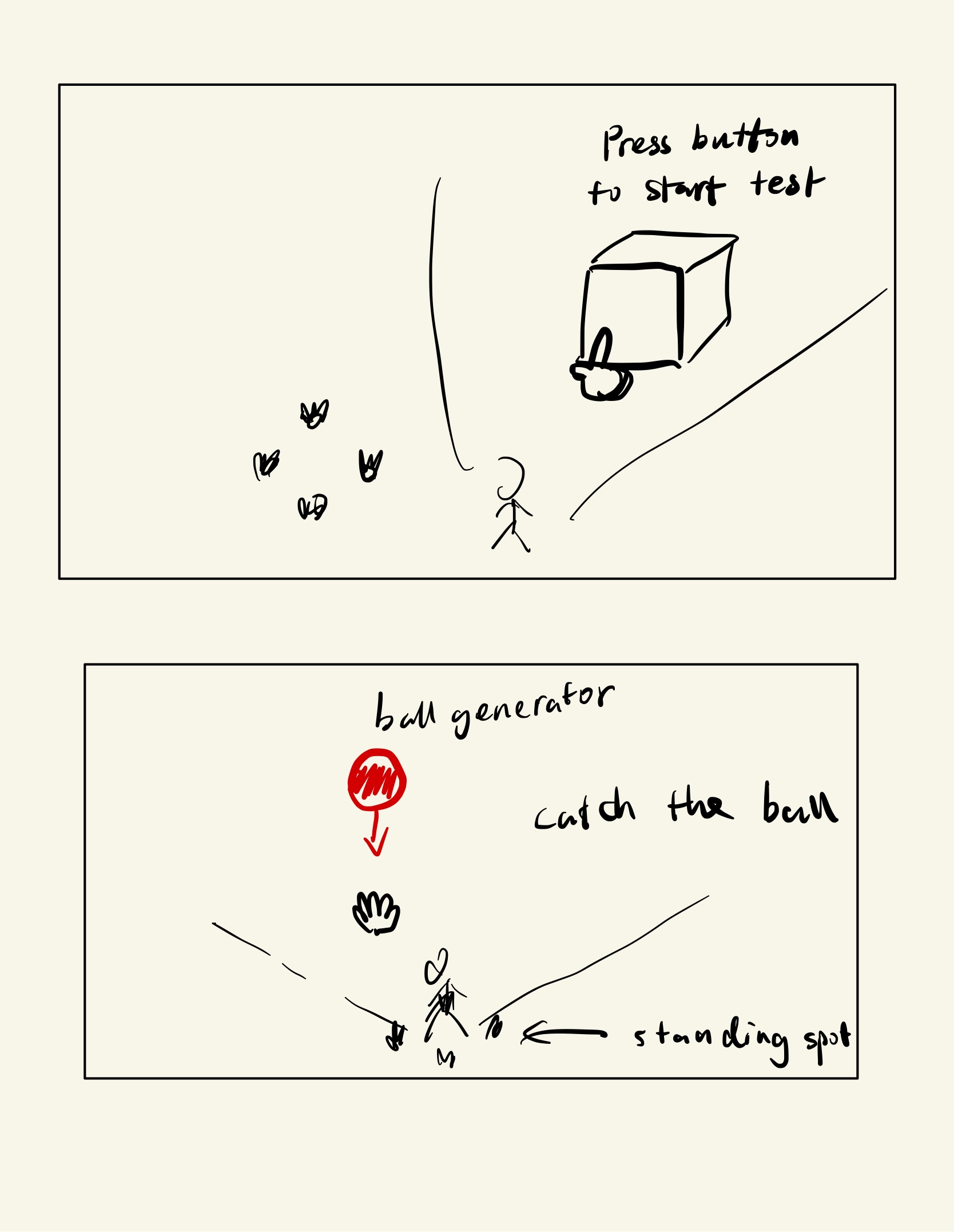
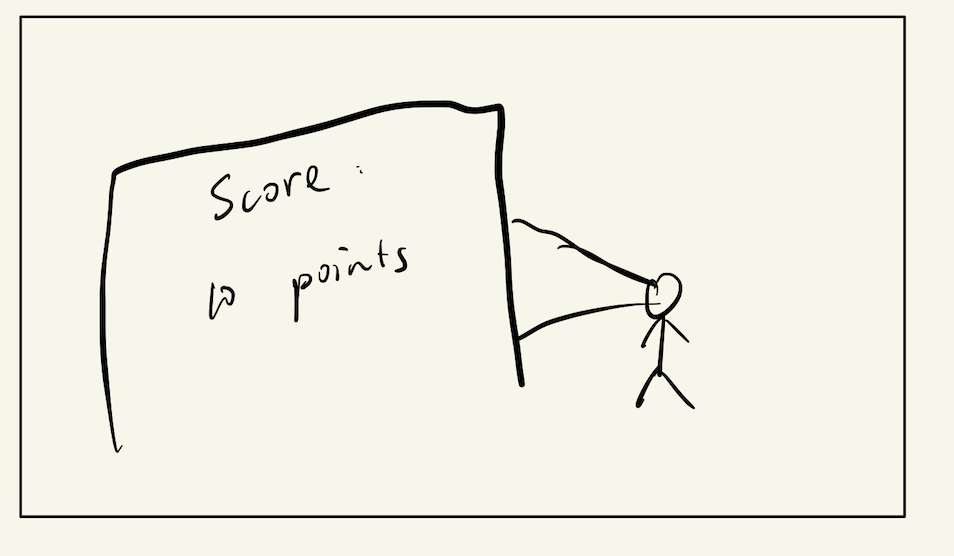
Technical Development
This application is developed in Unity3D with Oculus Integration package. An Oculus headset and two controllers are required to run this application. The application harnesses the capabilities of the Oculus VR system, ensuring a seamless and immersive experience for users. Leveraging Oculus's advanced tracking and interactive features, participants can navigate within the virtual environment using intuitive hand movements and controller inputs. To engage with the interactions, users simply press the box-shaped button on the controller to initiate or restart the test. Additionally, teleportation is facilitated by pointing to a desired location and pressing the teleport button on the controller. This enables participants to strategically position themselves for optimal ball-catching. Overall, the Oculus interface, combined with straightforward interaction mechanics, ensures an accessible and engaging user experience. (Somnath Chavan, 2022)
Descriptions of 3D Models
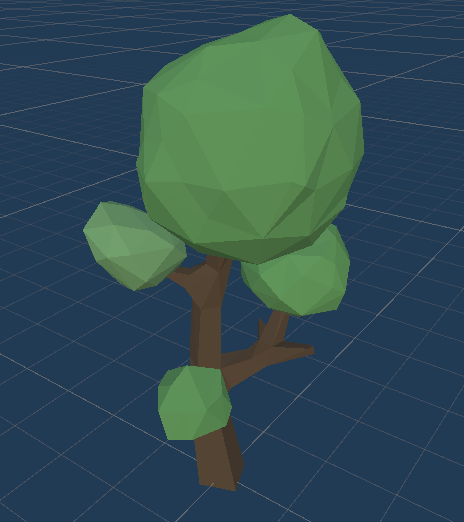
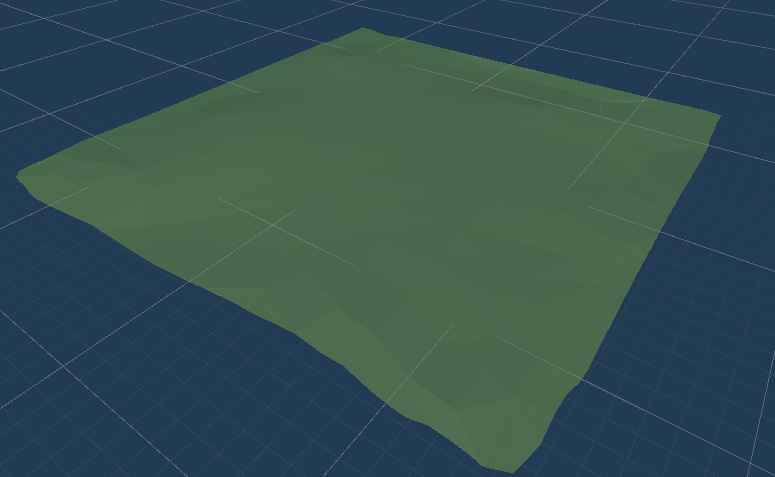
Tree and grass ground models are used to increase the imersiveness of application.
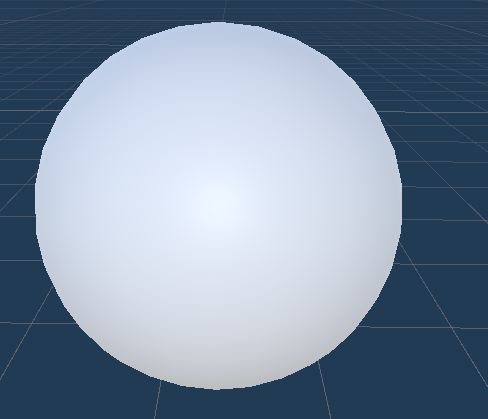
Ball's material are added as red or blue when generated.

Score board will show the score once the test is done.
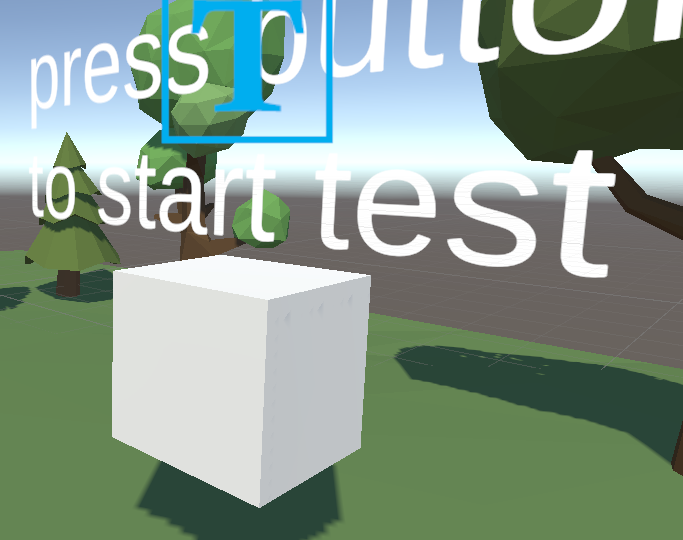
Box-shaped button to be pressed to start the test.
References
Alty, J., Bai, Q., Li, R. et al. The TAS Test project: a prospective longitudinal validation of new online motor-cognitive tests to detect preclinical Alzheimer’s disease and estimate 5-year risks of cognitive decline and dementia. BMC Neurol 22, 266 (2022). https://doi.org/10.1186/s12883-022-02772-5
Gorman. H. Activities to sharpen your eye‑hand coordination. Harvard Health Publishing (2021) https://www.health.harvard.edu/staying-healthy/activities-to-sharpen-your-eyehan...
Environment models: https://assetstore.unity.com/packages/3d/environments/landscapes/low-poly-simple...
Ball catching exercise for F1 drivers.
Leave a comment
Log in with itch.io to leave a comment.